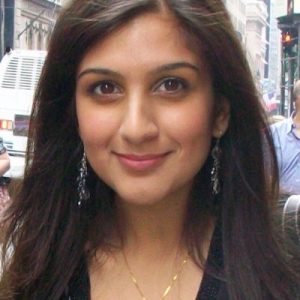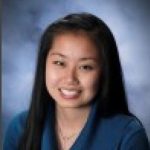First-year MBA student Preeya Sud came to Harvard Business School (HBS) from consumer product goods giant Procter & Gamble, where she worked for five years, ultimately in the role of senior assistant brand manager for Braun across six countries. Classmate Ching-Ching Chen, meanwhile, worked in institutional securities and global capital markets for Morgan Stanley and just happens to also be an accomplished violinist, pianist and vocalist. Sitting in the same section at HBS last fall, what did they discover they had in common? “Both Ching-Ching and I think that we are admit mistakes,” Sud says with a laugh.
Only it’s not funny. Why on Earth would these talented, bright, accomplished young women think they got into HBS on a lark? Because, like too many other talented young women, they both struggle with self-doubt. In fact, a Glamour article last year cited data showing that girls begin to lose their confidence starting as early as kindergarten.
In addition to that Glamour article, both women had also read Sheryl Sandberg’s best-selling Lean In: Women, Work and the Will to Lead, in which the Facebook COO challenges women to not only sit at the conference room table at work but to lean in, speak up and act with confidence. And yet, in the HBS classroom, Sud noticed that she—and many women around her—were doing just the opposite.

“I found that I was often caveating the things I said,” she recalls. She would raise her hand to speak in class—where 50 percent of the grade is based on participation—but lead in with phrases like “I think,” “I could be wrong” or “This is just my opinion, but…” The content she and her female classmates would then present was just as compelling as that of their male colleagues, she realized, only they’d diminished its value before it even left their mouths.
“It was shocking to me to see this kind of caveating going on,” Sud says. “We were all go-getters. We had all inhaled books like Lean In and aspired to live by these ideals, and yet here we were undermining ourselves.”
Chen found herself having the same experience. “At the end of my time at Morgan Stanley I felt pretty confident,” she says. “And yet as soon as I got to HBS I found myself hesitating to participate in class for fear I wouldn’t be able to express my point perfectly. Old habits die really slowly.”
At a dinner of just women about four weeks into school, she and Chen and others collectively decided they would make a conscious effort not to caveat before they spoke in class. A steady stream of Harvard Business Review articles focused on the pay gap between men and women kept issues of gender top of mind, and then came the November Glamour article on the confidence gap. “That struck close to home for a lot of us,” Chen says. “We began trying to understand why that is and what we can do to attack it.”
Brave Becca Is Born
 When Sud and Chen found themselves on the same team in HBS’s applied learning course—Field Immersion Experiences for Leadership Development (FIELD3)—charged with creating a micro-business around something they were passionate about, it didn’t take long to come up with Brave Becca. A children’s book based on Sandberg’s influential text, Brave Becca Leans In features a young girl in her first week of wizardry school. Targeted at girls aged five to eight, the story line brings to life the three key points of Sandberg’s second chapter, “Sit at the Table.” Specifically, it encourages girls—through Becca’s example—to speak up, act with confidence and attribute good results to hard work, not luck.
When Sud and Chen found themselves on the same team in HBS’s applied learning course—Field Immersion Experiences for Leadership Development (FIELD3)—charged with creating a micro-business around something they were passionate about, it didn’t take long to come up with Brave Becca. A children’s book based on Sandberg’s influential text, Brave Becca Leans In features a young girl in her first week of wizardry school. Targeted at girls aged five to eight, the story line brings to life the three key points of Sandberg’s second chapter, “Sit at the Table.” Specifically, it encourages girls—through Becca’s example—to speak up, act with confidence and attribute good results to hard work, not luck.
“We wanted to give girls and their parents the platform they need to address the confidence gap early on,” says Chen. Sud, who is editor-in-chief of HBS campus newspaper the Harbus, has always had a thing for writing and used to write children’s books for her nieces and nephews, which is part of what spawned the idea for Brave Becca. But neither woman ever imagined they would spend their time at HBS creating a business around children’s books.
Learning How to Build Something from the Ground Up Is Built into the Curriculum
“That has been the coolest and most beautiful part about FIELD3,” says Chen. “You get people together and then there are so many resources here, it’s like pick and choose. Learning how to build something from the ground up is built into the curriculum.”
Even once they’d hatched the idea of writing a book, they had no idea how to go about hiring an illustrator, obtaining an ISBN number or any of the other intricacies involved with the project. “At the end of the day when we have that finished project in our hands, it’s because we did it together as a team,” Chen says.

Though Sud and Chen wrote the book, the other four members of the FIELD3 team—all male—played critical roles in its creation as well, the women stress. One brought significant entrepreneurial experience, having launched successful ventures of his own in the past. Another contributed the tech skills needed to build the website that helps promote the book, and another offered money management expertise that helped make the HBS seed funding—less than $1,000—enough to get the project done. The fourth team member provided invaluable soft skills, helping the team come together and check in during tough times and evaluate how to make strategic pivots when necessary.
Is There Something About HBS That Spawned Both Lean In and Brave Becca?
What does it mean that both Lean In and its spin-off for children were written by women who have navigated the HBS MBA classroom? Obviously, much has changed since Sandberg graduated in 1995, including a New York Times article that called attention to challenges faced by women in the HBS class and a concerted effort on the part of the school’s administration to address them. But does the fact that women at HBS are still struggling with issues of confidence in class suggest that things haven’t come far enough?
Sud and Chen argue the opposite—that it is the confidence that they develop thanks to HBS’s signature case method that have emboldened them, and perhaps emboldened Sandberg, to tackle these issues head on. “What is really great about the case method is that I now feel a much greater sense of confidence talking and making a point and defending and arguing that point,” Sud says, although she acknowledges that the learning curve has been very steep. “My heart isn’t racing every time I raise my hand to speak now,” she says. “I’m also incredibly inspired by the other women around me and the things that they have all done.”
Chen chose HBS in huge part because of the case method. “The confidence gap has been my biggest issue for the longest time,” she says, noting that she has never been one to sit at the front of the class or raise her hand first. “Being in an environment where it was required of me has been so rewarding,” she continues. “Hearing people speak in a very confident way, I’ve realized ‘Wow, that actually makes an impact.’”
Well before the Times article, in 2011, HBS placed monitors in the classrooms to evaluate how professors were calling on students in an effort to identify and address any biases. Professors now share a monthly status update on their patterns of calling on students—x percent female, y percent international, etc. “I am impressed at the professors’ ability to get the numbers right—down to the 0.5 percent,” says Chen. “From the practices the school has put into place to school club leadership, we are seeing a big move in a positive direction,” she says, noting that the HBS Student Association this year features female co-presidents for the first time.
“The fact that both Ching-Ching and I think that we are admit mistakes—where did this come from and was this born before HBS or not?” questions Sud. “I think the answer is before HBS, and that’s why our book targets a much younger age,” she says. “I don’t want someone in 20 years saying ‘Oh, I got into HBS as a mistake’ as the result of the confidence gap.”
Here, here.
Brave Becca is available for purchase in paperback at Amazon for $10.99 as well as in select Boston bookstores and on Kindle. Learn more at www.bravebecca.com.
Pictured above: Brave Becca FIELD3 team members: Chen and Sud with Jeremy Au, Anthony Ferrara, Satoshi Yamaguchi and Andres Klaric.





